#week8
Text
Can Crowdfunding Build a Community for Creatives?
Crowdfunding is a unique and effective way for people who are passionate about something to raise money for their initiatives and meet other like-minded people in the internet era. This kind of internet fundraising can help build lively, involved communities in addition to supporting artistic endeavours. In this blog, we'll examine how crowdfunding might help creatives create a community that supports them as they develop their ideas and engage with the public.
The Power of Crowdfunding
Raising money from a huge number of individuals is known as crowdfunding, and it usually happens through websites like Kickstarter, Indiegogo, and Patreon. By raising money from fans all across the world, it has enabled innumerable musicians, writers, filmmakers, artists, and other creatives to realise their goals.
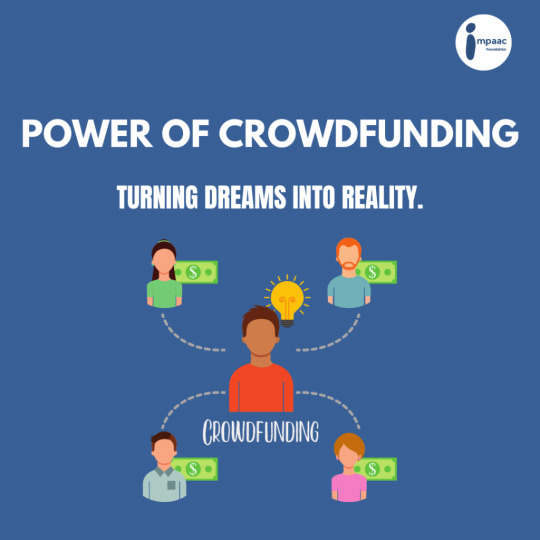
URL Link : https://www.blog.impaac.org/the-power-of-crowdfunding-turning-dreams-into-reality/
Building a Community of Supporters
The ability of crowdfunding to foster personal connections between creators and their audience is one of its most amazing features. Through crowdfunding sites, creators may exhibit their work, tell their experiences, and establish direct connections with possible supporters, in contrast to traditional fundraising approaches.
Creatives build community by communicating with backers and sharing their artistic journeys. An increased sense of connection is felt by supporters with the project and its creators. Between creators and backers, this sensation of belonging has the power to truly transform and forge a link.
Transparency and Trust
One of the core principles of crowdfunding is transparency. Artists need to be open and honest about the status, difficulties, and deadlines of their work. In the community, trust is increased by this transparency. In addition to funding a project, backers are also investing in the creators. They wish to follow the project's development and participate in its creative process.
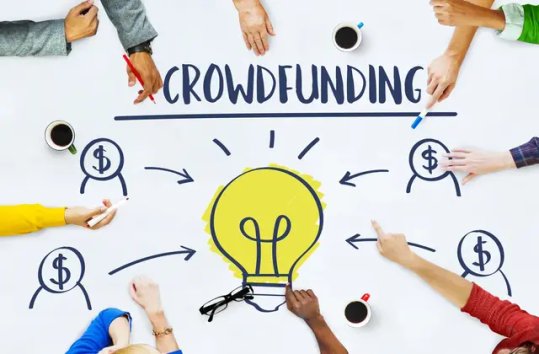
URL Link : https://www.btcpa.com/operational-transparency-key-effective-crowdfunding/
Rewards and Incentives
Creators frequently give backers incentives and rewards to boost support. These could be personalised shoutouts, limited-edition products, early access to the project, or even participation in the creative process. These benefits provide backers a sense of exclusivity and encourage contributions by making them feel like a valued member of the community.
Examples of Successful Crowdfunding Communities
Crowdfunding has been an effective tool for creating communities in a number of artistic endeavours. Here are a handful of noteworthy instances:
Patreon: A Platform for Independent Creators: Patreon is a way for writers, singers, artists, and other creatives to get continuous support from their followers. It creates a membership club where users may access creators' worlds and obtain exclusive content.Kickstarter Campaigns: Numerous imaginative initiatives have been started on Kickstarter. Regular updates, sharing of their work in progress, and communication with backers via messages and comments are all common practises among creators. The exchange fosters a feeling of community.
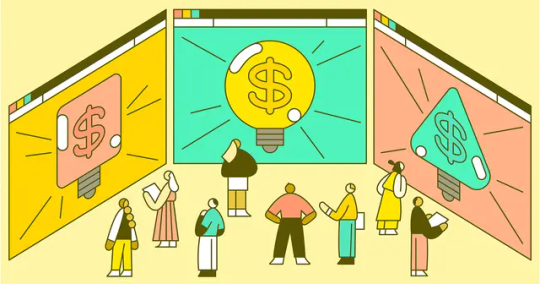
URL Link : https://www.shopify.com/my/blog/crowdfunding-sites
Writers' Communities: A lot of authors have published their novels using crowdsourcing. By asking for feedback on narrative development, names, and even covers, they include backers in the process. The reader-author relationship is strengthened by this active engagement.
Difficulties and Things to Consider
Although crowdsourcing has the potential to foster a creative community, there are several obstacles and factors to take into account.
Creators must be dedicated to supporting their community for the duration of the project and beyond.Managing Expectations: To preserve community trust, reasonable expectations must be set and project deadlines must be met.Fulfilment: Maintaining a good rapport with backers requires successfully meeting commitments and providing benefits.Competition: In order to draw backers, creators on crowdfunding sites must stand out due to the intense competition.
Crowdfunding Communities: A Look Ahead
The crowdfunding industry is still developing. The distinction between established business models and crowdfunding becomes more hazy as new platforms and models appear. Some producers have switched from one-time campaigns to recurring subscriptions, building long-lasting communities and steady revenue streams.
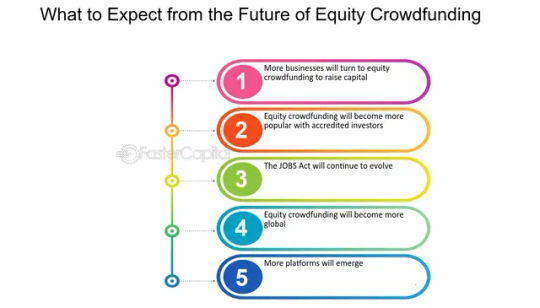
URL Link : https://fastercapital.com/content/The-Future-of-Equity-Crowdfunding--Why-it-s-Becoming-More-Popular-and-What-to-Expect.html
Growing communities around crowdfunding have the power to shape the course of artistic endeavours, spur creativity, and build a community of people who share a love for similar causes or forms of expression.
In summary, the goal of crowdsourcing is community building rather than just financial fundraising. It enables artists to realise their visions and establish connections with a devoted and interested audience. Crowdfunding may create thriving communities that will continue to influence the direction of creative endeavours in the future by offering rewards, transparency, trust, and continuous interaction.
Remember that crowdfunding is about more than just raising money for a project; it's about creating a community of like-minded people that value creativity as you set out on your own creative path or think about helping others. See where crowdsourcing can take you by participating in the discussion and taking part in the trip.
5 notes
·
View notes
Text
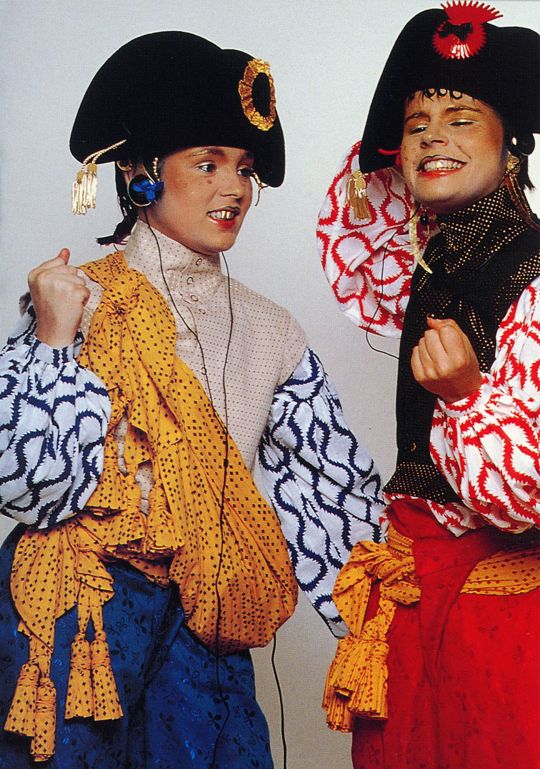
Vivienne Westwood, 1981, Pirate collection
23 notes
·
View notes
Text
In an era filled with fake news, what effect can this have on crowdsourced information?

In today's digital age, the rapid dissemination of information has empowered individuals to contribute to a collective pool of knowledge through crowdsourcing. Crowdsourced platforms harness the diverse perspectives of the online community to generate, validate, and curate information. However, the pervasive issue of fake news threatens the very foundation of crowdsourced information, raising questions about its reliability and impact. In this article, we explore the profound effects of fake news on crowdsourced information and delve into potential strategies to mitigate these challenges.
Trust in the Era of Misinformation:

The credibility of crowdsourced information is intricately connected to the reliability of its contributors, as emphasized by Lamprou et al. (2021). In the contemporary landscape saturated with the proliferation of fake news on social media and various online platforms, the trustworthiness of information sources is under constant threat (Lamprou et al., 2021). In such an environment, individuals who rely on crowdsourced data face a growing challenge in distinguishing accurate information from the overwhelming sea of misinformation. This heightened difficulty in discernment contributes to a decline in overall trust in crowdsourcing platforms. As users grapple with the influx of unreliable data, the very foundation of crowdsourced information, dependent on the collective wisdom of contributors, is susceptible to erosion, necessitating a nuanced approach to address the trust crisis in the era of fake news.
Validation in the Face of Deception:
At the heart of crowdsourcing lies the fundamental principle of collectively validating information, as emphasized by Lamprou et al. (2021). However, this foundational concept faces a formidable challenge in the prevalent era of fake news. The insidious spread of misinformation introduces a novel layer of complexity to the collective validation process, requiring contributors to navigate a landscape where distinguishing fact from fiction becomes an increasingly daunting task. The very essence of crowdsourcing relies on the accuracy of information, yet contributors find themselves grappling with the arduous challenge of upholding this accuracy amidst the deluge of misleading content. As misinformation proliferates, the validation mechanisms inherent in crowdsourced platforms are put to the test, prompting a critical evaluation of their efficacy in maintaining the integrity of the information verification process. The struggle to discern the truth in the face of misinformation underscores the intricate dynamics at play within the crowdsourcing paradigm.
Impact on Decision-Making:
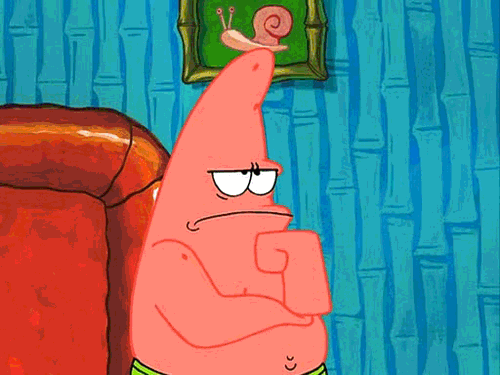
The impact of fake news on crowdsourced information reverberates through decision-making processes, encompassing realms from journalistic endeavors to policy formulation, as articulated by Chiu et al. (2014). Decisions grounded in flawed crowdsourced data can carry tangible consequences in the real world. The pervasive influence of misinformation within the information landscape poses a formidable challenge for decision-makers. Navigating through this tainted environment requires heightened vigilance and an urgent implementation of additional measures to ensure the accuracy of crowdsourced information (Chiu et al., 2014). Chiu et al.'s insights underscore the critical need for a meticulous and discerning approach in utilizing crowdsourced data for decision-making, emphasizing the potential repercussions that misinformation can have across various sectors and the imperative for safeguarding the integrity of the information utilized in decision-making processes (Chiu et al., 2014).
Mitigation Strategies in the Digital Age:
Addressing the intricate challenges posed by fake news within the realm of crowdsourced information necessitates a comprehensive and proactive strategy. Crowdsourced platforms should deploy robust mechanisms designed to detect and filter out misinformation seamlessly integrated into their systems. Simultaneously, initiatives focused on education and awareness campaigns directed at contributors become essential, enabling individuals to develop a critical eye in evaluating information and thereby curbing the inadvertent propagation of misinformation. Furthermore, the integration of technological advancements plays a pivotal role in mitigating the impact of fake news on crowdsourced information. Leveraging machine learning algorithms and automated tools stands out as a particularly effective approach, allowing for the identification and removal of false information. The implementation of such technological solutions serves to enhance the overall quality and reliability of crowdsourced datasets, fostering a more trustworthy information ecosystem (Tucker et al., 2018).
Conclusion:
In conclusion, the era of fake news has profound implications for crowdsourced information. The trustworthiness of contributors, the validation processes, and the impact on decision-making all highlight the critical need for vigilance and innovation in the realm of crowdsourcing. By embracing technological advancements and empowering contributors with the tools to navigate the complexities of misinformation, we can strive to build a more resilient and reliable foundation for crowdsourced information in the digital age.
List of References:
Chiu, C-M, Liang, T-P & Turban, E 2014, ‘What can crowdsourcing do for decision support?’, Decision Support Systems, vol. 65, pp. 40–49.
Lamprou, E, Antonopoulos, N, Anomeritou, I & Apostolou, C 2021, ‘Characteristics of fake news and misinformation in Greece: The rise of new crowdsourcing-based journalistic fact-checking models’, Journalism and Media, vol. 2, no. 3, pp. 417–439.
Tucker, JD, Pan, SW, Mathews, A, Stein, G, Bayus, B & Rennie, S 2018, ‘Ethical concerns of and risk mitigation strategies for crowdsourcing contests and Innovation Challenges: Scoping Review’, Journal of Medical Internet Research, vol. 20, no. 3.
4 notes
·
View notes
Text
The Impact of Fake News on Crowdsourced Information
#MDA20009 #week8
Introduction
In today's digital age, the proliferation of fake news has become a concerning issue. This deceptive information can have a profound impact on crowdsourced data and the communities that rely on it. This blog explores the implications of fake news on crowdsourced information, shedding light on the challenges it poses and offering real-world examples (Dhiman 2023).

Crowdsourcing: The Backbone of Information
Crowdsourcing involves harnessing the collective knowledge and contributions of the public to gather, curate, and share information. It's a powerful tool for everything from Wikipedia to open-source projects. Crowdsourced data has revolutionized the way we access information and has become a valuable resource in a variety of fields. The power of crowdsourcing lies in its ability to tap into the collective wisdom of diverse individuals, leading to richer, more comprehensive information (Hargrave 2022).
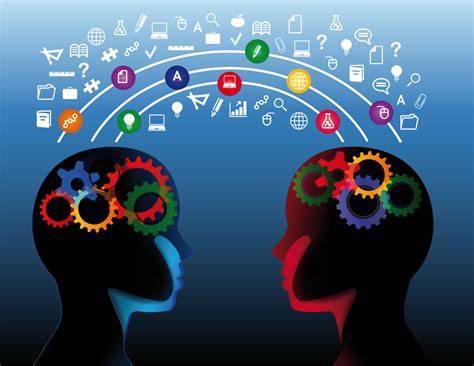
The Rise of Fake News
The internet has given fake news an unprecedented platform to spread. False or misleading information, often disguised as legitimate news, can quickly go viral, causing confusion and distrust among online communities. Fake news can take various forms, from fabricated stories to manipulated images and misleading headlines. The ease of sharing information online, coupled with the increasing polarization of digital communities, has made fake news a persistent problem (Aimeur, Amri & Brassard 2023).

Impact on Crowdsourced Information
Challenge in Verification
One of the most significant challenges posed by fake news is the difficulty in verifying the accuracy of information on crowdsourced platforms. When fake news infiltrates these platforms, it becomes challenging to separate fact from fiction. Take, for example, a crowdsourced map of disaster areas. If it contains information derived from fake news reports, it could lead to misallocation of resources and even put lives at risk (Ludvik 2020).

Disrupt and Polarization
Fake news doesn't just cloud the accuracy of crowdsourced data; it also erodes trust within communities. When information becomes tainted by false narratives, it can lead to division and polarization among users. For instance, a heated discussion on a platform like Reddit or Stack Exchange can escalate when fake news is introduced, undermining the collaborative nature of these platforms (Dizikes 2021).

Real-World Examples
Wikipedia Editing Wars
Wikipedia is a prime example of crowdsourced information. It relies on the contributions of volunteers to maintain an extensive and continuously evolving encyclopaedia. Fake news can disrupt this delicate balance, leading to what are known as "editing wars." These wars occur when contributors with conflicting beliefs and biases edit articles on controversial topics to reflect their viewpoints. For instance, articles on climate change have been battlegrounds for editing wars due to the influence of fake news and misinformation (Haviland 2018).

OpenStreetMap and Misplaced Crowdsourced Data
OpenStreetMap, a collaborative project to create a free and open map of the world, relies on contributors to provide accurate geographic data. Fake news can mislead contributors into adding inaccurate or misleading information. In one instance, fake news regarding the location of a prominent landmark led contributors to place it in the wrong place on the map, causing confusion for users and travellers (Novack, Vorbeck & Zipf 2021).

Combining the Impact
Media Literacy
Educating individuals about media literacy is crucial in combating the effects of fake news on crowdsourced data. Encouraging critical thinking and teaching individuals how to fact-check information can help users distinguish between credible and false information. Promoting media literacy not only empowers individuals to discern the accuracy of information but also contributes to a more informed and discerning online community (Lord & Vogt 2021).

Platform Policies
Crowdsourced platforms can play a vital role in mitigating the impact of fake news. They can implement stricter content policies and fact-checking measures to prevent the spread of false information within their communities. By setting clear guidelines and enforcing them rigorously, these platforms can help maintain the quality and credibility of crowdsourced information (Ng, Tang & Lee 2022).

User Vigilance
Empowering users to report suspicious content can be an effective means of maintaining the quality of crowdsourced information. Many platforms rely on vigilant users to help identify and address fake news. By encouraging users to flag misleading or false content, platforms can more effectively address the problem and maintain the trust of their communities (Zewe 2022).

Collaborative Fact-Checking
Promoting a culture of fact-checking among contributors can be a proactive approach to mitigate the impact of fake news on crowdsourced data. Crowdsourced platforms can encourage users to verify information before contributing it. This can help prevent the spread of false information, improve the accuracy of data, and enhance the overall quality of the shared knowledge (LI & Chang 2023).

Conclusion
In an era filled with fake news, the effects on crowdsourced information are significant and complex. The examples provided highlight the challenges that communities face when trying to maintain the accuracy and integrity of their shared knowledge. However, by fostering media literacy, enforcing platform policies, promoting user vigilance, and encouraging collaborative fact-checking, we can collectively combat the negative impact of fake news and ensure that crowdsourced information remains a reliable resource in the digital age. Crowdsourcing has the potential to be a powerful force for good, and by addressing the challenges posed by fake news, we can harness its full potential in building a more informed and connected world.
List of References
Aimeur, E, Amri, S & Brassard, G 2023, 'Fake news, disinformation and misinformation in social media: a review', Soc Netw Anal Min, vol. 13, no. 1, viewed 1 November 2023, <https://www.ncbi.nlm.nih.gov/pmc/articles/PMC9910783/>.
Dhiman, B 2023,, 'The rise and impact of misinformation and fake news on digital youth: A critical review', University of Science and Technology, YMCA, 1 May, viewed 1 November 2023, <https://papers.ssrn.com/sol3/papers.cfm?abstract_id=4438362>.
Dizikes, P 2021, 'Study: Crowds can wise up to fake news', MIT News, 1 September, viewed 1 November 2023, <https://news.mit.edu/2021/crowd-source-fact-checking-0901>.
Hargrave, M 2022, Crowdsourcing: Definition, how it works, types, and examples, Investopedia, viewed 1 November 2023, <https://www.investopedia.com/terms/c/crowdsourcing.asp#:~:text=Crowdsourcing%20is%20the%20collection%20of%20information%2C%20opinions%2C%20or,skills%20or%20thoughts%20from%20all%20over%20the%20world.>.
Havilland, E 2018, 'Competing with or against crowds', Digital Innovation and Transformation, 19 March, viewed 1 November 2023, <https://d3.harvard.edu/platform-digit/submission/wikipedia-the-ultimate-crowdsourced-knowledge-tool/>.
Li, J & Chang, X 2023, 'Combatting misinformation by sharing the truth: a study on the spread of fact checks on social media', Information Systems Frontiers, 11 June, viewed 1 November 2023, <https://link.springer.com/article/10.1007/s10796-022-10296-z>.
Lord, KM & Vogt, K 2021, 'Strengthen media literacy to win the fight against misinformation', Stanford Social Innovation Review, 18 March, viewed 1 November 2023, <https://ssir.org/articles/entry/strengthen_media_literacy_to_win_the_fight_against_misinformation#>.
Ludvik, E 2020, The impact and role of crowdsourcing in the information age, Crowdsourcing Week, viewed 1 November 2023, <https://crowdsourcingweek.com/blog/the-impact-and-roles-of-crowdsourcing-in-the-information-age/>.
Ng, KC, Tang, J & Lee, D 2022, 'The effect of platform intervention policies on fake news discrimination and survival on empirical examination', Journal of Management Information Systems, vol. 38, no. 4, viewed 1 November 2023, <https://www.tandfonline.com/doi/full/10.1080/07421222.2021.1990612>.
Novack, T, Vorbeck, L & Zipf, A 2021, 'An investigation of the temporality of OpenStreetMap data contribution activities', Geo-spatial Information Science, 7 October, viewed 1 November 2023, <https://www.tandfonline.com/doi/full/10.1080/10095020.2022.2124127>.
Zewe, A 2022, 'Empowering social media users to assess content helps fight misinformation', Massachusetts Institute of Technology, 16 November, viewed 1 November 2023, <https://www.sciencedaily.com/releases/2022/11/221116150648.htm>.
2 notes
·
View notes
Text
Omegalul-ing through the pain: Online harassment and cyberbullying against women in the gaming community
As a girl in the gaming community, I have been extremely lucky in terms of interacting with strangers online. I have made many online friends through games and Discord and even developed connections more intimate than people I know in real life (iykyk). However, the same cannot be said for women and many others that belong in the minority groups that use the internet. As gaming is a traditionally and stereotypically white male-dominated activity, minorities can easily become the target of unwanted attention due to factors such as stereotypes, racism, homophobia, transphobia and misogyny. In the gaming industry, 20% of female players have encountered sexual harassment in the form of objectifying remarks, death threats, or rape threats from male or other players (Bougacha 2022). In reality, according to a poll done in the US, Germany, and China, 59% of women conceal their gender to avoid sexism and violence (Bougacha 2022). Harassment online comes in many forms such as slurs, death threats, doxxing or the act of disclosing personally identifiable information about someone online without their consent, including their true name, address, phone number, and financial and other details (Kaspersky 2023).
Online harassment in the gaming community is not just experienced in-game but it can occur in any other online spaces that allow open interaction between players and users. Community platforms such as Discord, Twitch and YouTube are spaces that gamers and non-gamers visit often thus making it easier to become a victim of virtual harassment and cyberbullying. In even more extreme cases, these online harassment can move offline too. Amouranth, a popular Twitch streamer and OnlyFans model, has had many online and offline stalker encounters. In 2022, a guy from Estonia was detained when he attempted to enter Amouranth's house (Gwilliam 2023). This happened after he apparently sold all of his possessions in a last-ditch effort to meet the model and start a relationship with her (Gwilliam 2023). Amouranth mentioned that she was scared for her life as this man had been routinely walking around her neighbourhood while hosting a Twitch stream called “Find Amouranth and Make Her Mine” (Moore 2022).
Amouranth’s case is only one among a countless number of women that risk their lives everyday despite not doing anything wrong. Women are not safe from harassment no matter online or offline. While gaming communities and platforms should do more to protect vulnerable groups like women, they cannot be blamed 100% because if people want to hurt minority groups, they will bypass any moderation and censors to get to the individual. While platforms should aim to provide better protection for everyone, especially women and resistless groups, we should all learn to follow cyber etiquette to ensure a safe online experience for all.
References
Bougacha, S 2022, Gaming: Hidden Sexism and Harassment, IVolunteer International, viewed 12 June 2023, <https://www.ivint.org/gaming-hidden-sexism-and-harassment/>.
Gwilliam, M 2023, Amouranth says stalker tried breaking into her house again and left mysterious package, Dexerto, viewed 12 June 2023, <https://www.dexerto.com/entertainment/amouranth-says-stalker-tried-breaking-into-her-house-again-and-left-mysterious-package-2076350/>.
Kaspersky 2023, What is Doxing – Definition and Explanation, Kaspersky, viewed 12 June 2023, <https://www.kaspersky.com/resource-center/definitions/what-is-doxing>.
Moore, E 2022, Amouranth Stalker Arrested After Travelling From Europe For Alleged Break-In Attempt, Gaming Bible, viewed 12 June 2023, <https://www.gamingbible.com/news/amouranth-stalker-arrested-following-alleged-breakin-attempt-20220616>.
#mda20009#digital communities#digitalcommunities#week8#week 8#social media governance#cyberbullying#online harassment#amouranth#twitch#discord#youtube#reddit#doxxing
3 notes
·
View notes
Text
Crowdsourcing (mm basic)

What is Crowdsourcing?
The word "crowdsourcing" was coined by a writer called Jeff Howe in a June 2006 story published in Wired Magazine. He proposed the following definition of crowdsourcing:
"Crowdsourcing is the act of a company or organisation adopting a function previously performed by staff and outsourcing it in the form of an open call to an undefined (and generally huge) network of people." (Howe, 2006)
Crowdsourcing, in essence, is an open invitation for anybody to contribute in completing a task in cyberspace (Brabham, 2008; Howe 2008). The term "anyone" does not always refer to everyone. The criterion for the crowd or those asked to participate, according to Enrique Estellés-Arolas and Fernando González-Ladrón-de-Guevara (2012), must be explicit. They must be able to access the internet and possess information, knowledge, and abilities relevant to the job assigned.
Crowdsourcing is always related with the internet since internet facilities are utilised to collect data from the public in order to cover any location and at any time. According to the findings of Enrique Estellés' (2012) research, persons that participate in crowdsourcing form an association with a variety of traits, heterogeneity, and expertise that is dictated by the needs of the crowdsourcing activity being carried out (Estellés & González, 2012). Although anyone can engage in crowdsourcing, the crowdsourcing implementer expects participants to be knowledgeable about the crowdsourcing theme and to offer data that is reliable and not fabricated.
The crowdsourcing system has been widely used for a variety of objectives. Begin by mapping needs (crowdmapping), then move on to innovation processes, creative and entertainment activities, journalism, crowdfunding, democratic processes, and social movements. Some tangible examples of social movements employing crowdsourcing tactics include:
Harassmap, founded in 2010 by Rebecca Chiao, is an interactive map that collects accounts of abuse suffered by women or other victims. This initiative aims to combat sexual violence in Egypt.
Kuhonga is a Nairobi-based website that maps corruption. The website allows Kenyans to report corruption situations in real time using mobile applications, email, social media, or the website itself. This website addresses corruption in government, law enforcement, immigration and customs, educational institutions, and companies.
Howe, J. 2006. The Rise of Crowdsourcing. Wired Magazine (Vol. 14, pp.1-4)
Howe, J. 2008. Crowdsourcing: why the power of the crowd is driving the future of business.New York: Crown Business

4 notes
·
View notes
Text
deep, bitter dissapointment. That`s all that I feel about yesterdays clip and the IG content. ☹️
Feels like they hate their own fandom.
#teasing us all week with this party and then THIS?#we knew that Spiderwitz wouldnt be there but where is everyone else?#they wasted the best opportunity for a fun and wholesome partyclip with everyone#also where was Sascha?#I just hate this season#do they want to kill Druck off? so that nobody ever asks for a 9th season again`?#feels like this is their plan......and sadly it works#druck#s8#week8#wtf!?
11 notes
·
View notes
Text
Crowdsourcing in times of crisis
Crowdsourcing is when information, work, and opinions are gathered from a crowd through the Internet, applications or even social media. In fact, most of the information that can be found on the Internet is crowdsourced! Crowdsourcing is a good way to solve many problems in a short period of time. It doesn’t cost much to crowdsource information and it also provides you with different perspectives, as opinions are being crowdsourced as well. Generally, crowdsourcing is effective for various reasons.

The question is, can crowdsourced information during times of crisis mobilise the public into action? Yes. Take the white flag movement in Malaysia as an example. The #benderaputih (white flag) movement was started on social media by Malaysians who were in need of food and supplies during the COVID-19 pandemic. Many lost their job due to the COVID-19 pandemic and they didn’t have any other alternatives to put food on the table. The movement required those in need of supplies and food to hang a white flag or cloth in front of their homes (Rodzi 2021). Neighbours can then provide them with assistance, either by donating supplies and food or by posting about the situation on social media so that organisations can donate to them.

According to Chung (2021), three students from Multimedia University (MMU) developed a web application that played an important part in the movement. After realising that there was no centralised platform to connect those in need and those able to help, they developed a crowdsourcing platform, Sambal SOS. Those who need help can visit the web browser at https://www.sambalsos.com/ and send an SOS to get help or access the locations of food banks. Others get to report those putting up white flags from the app. The development of this web browser was praised by Malaysians due to its convenience.
Crowdsourcing is a reasonable practice, especially for organisations to look for a fresh set of ideas or solutions, all possible from the power of the crowd.
References:
Chung, N 2021, White flag campaign - MMU students create app to help, Free Malaysia Today (FMT), viewed 12 November 2022, <https://www.freemalaysiatoday.com/category/nation/2021/07/06/white-flag-campaign-mmu-students-create-app-to-help/>.
Rodzi, NH 2021, Malaysians launch white flag campaign to signal distress without begging, The Straits Times, 30 June, viewed 12 November 2022, <https://www.straitstimes.com/asia/se-asia/malaysians-launch-white-flag-campaign-to-signal-distress-without-begging>.
2 notes
·
View notes
Text
Week 8 - Digital Iteration
(Open the photos for a clearer image resolution.)
Pre-Class: Andrew Simpson's razor handle video goes heavily in-depth on the use of a 3D model, showing how unlike a sketch the 3D iteration can communicate important considerations such as weight, size and ergonomics. When he discusses 'low-fidelity' and 'high-fidelity' models, it can be speculated he is referring to the quality of the model and how close it is to the final product. For example, a quick 3D-printed model with the general shape would be 'low-fidelity' whilst an injection moulded handle with greater detail would classify as 'high-fidelity''.
Part 1 - The Basics
This week was quite the puzzle as I am new to the world of 3D modelling software and it can get somewhat overwhelming very quickly. Prior to starting the exercise many tutorials were watched and a lot of time was dedicated to learning how the 3ds Max interface works.
This smaller exercise was a big aid for warming up to the program and found myself messing around with all the settings and endless modifications available. Starting off with my sphere was quite simple and helped me learn how to modify positions and measurements. [F.1]

[F.1] The Sphere™
From then on I messed around with colours, modifiers and even different shapes. I made a few abstract and organic shapes which was quite fun and then somehow ended up creating a cartoon-like ice cream; maybe it was the hunger talking. [F.2] I did struggle at first with the layout of the program and finding where the modifiers were and how to toggle them on and off once applied but YouTube was a true friend to help figure this out.

[F.2] Shape Experimentation
Part 2 - Sculptural Forms
Apart from the very random ice cream, I watched the recommended tutorials and began making a few random objects here and there although some looked a bit wonky. I definitely have to get better at using the modifiers to my advantage when creating specific shapes and curves.
Despite the struggle, I challenged myself to create a quick iteration of an animal. Not necessarily realistic, but crafted well enough that you would know it is an animal. I went with a capybara because they have a pretty simple silhouette and before I knew it I had crafted myself a friend called Carl. [F.3]
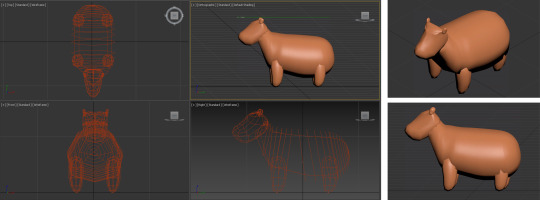
[F.3] Carl the Capybara
Just look at this friendly fella, it radiates nothing but pure happiness! I must admit that I now fear future exercises will never compare to the fun I had creating such a wholesome design. Overall, this week was really entertaining and a good learning experience for someone like myself who was completely new to this program. Hopefully, I can one day I learn how to 3D-print Carl.
6 notes
·
View notes
Text
Crowdsourcing and how it improves the Internet we live in.
Most times, many things on the Internet that we interact with and see are user-generated content, be it art, articles or even music. it was created by someone with the intention to be creative, to be informative and share their creativity with other like-minded people. The internet itself was first invented to be a system to share information through a network.
Sharing information and ideas then becomes the way the internet is heading into. A hivemind of collective information at the fingertips of a person that is all crowdsourced. Crowdsourcing is a process of exploring ideas and information that is available from a significant source of people with the intent of using the information to solve a problem or improve some form of quality work.

One way that crowdsourcing improves the internet is the improvement of information that is being shared to people all around. websites like Wikipedia happens to be a free encyclopedia that is created and edited by people all around the world. This means that anyone is able to share their information about a topic. But that also means that fake information can spread but this is not an issue as long as it is factual and there is references to back it up.
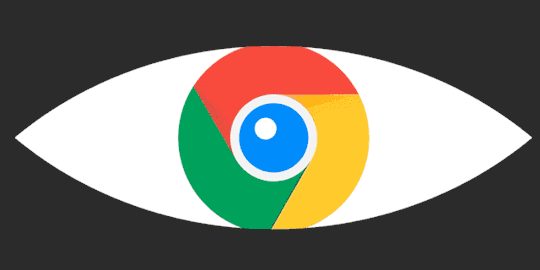
Besides just Wikipedia, crowdsourcing helps people that just needs help with things that they need to troubleshoot. Have you ever had the issue where you're suddenly faced with a problem and the first thing you do is either call your parents or Google it. Googling a solution has become such a common way of trying to figure out how to solve a problem that it becomes the first thing we think of doing. People that shared their problems and the ways they have solved the problem become information crowdsourced for the next batch of people to search for.
Another way crowdsourcing improves the internet is the way it shares things. While not just sharing written information, crowdsourcing can also be a form of sharing digital data. Sharing happen in networks all around the internet such as in centralised network with a server centered around it or like a decentralised network that acts like peer-to-peer sharing.
2 notes
·
View notes
Photo


#Illustration#comic#fnf#fnf pico#friday night funkin#pico#pico day#fnf week 8#week8#bf#boyfriend#gf#girlfriend#newgrounds#fanart#myart
12 notes
·
View notes
Text
Can crowdfunding build a community for creatives?

What is CROWDFUNDING?
Crowdfunding is a method of raising funds for initiatives and enterprises. It allows fundraisers to collect donations from huge groups of people using internet platforms.
Crowdfunding is most commonly utilised as an alternate funding source by startups or expanding enterprises. It's a creative approach to fund a new initiative, business, or concept.
It can also help you build a community around your product. You may also obtain vital industry information and attract new consumers by using the power of internet communities.
How does CROWDFUNDING work?
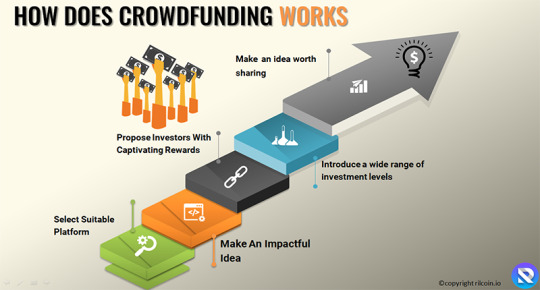
Crowdfunding platforms are websites that allow fundraisers to communicate with large groups of people. Crowdfunding platforms allow for financial commitments and solicitations.
If a fundraising campaign is successful, crowdfunding sites often charge a fee to the fundraiser. In exchange, the crowdfunding site is required to deliver a safe and simple service.
A lot of platforms use an all-or-nothing fundraising strategy. This implies that if you meet your objective, you will receive your money, and if you do not, everyone will receive their funds refunded - no bad intentions and no losses.
Can CROWDFUNDING build a community for creatives?
As art is a mirror of society, every artist feels a tremendous duty to contribute to society. Every artist has a set of thoughts they want to share with the world. However, money or investment is frequently the sole impediment that prevents most ideas and fantasies from coming to fruition.
Crowdfunding is a great solution to this problem. Crowdfunding is easier and more targeted in today's digital age. You can simply discover the proper people to support your cause by creating a platform or page to let people know about your endeavour.
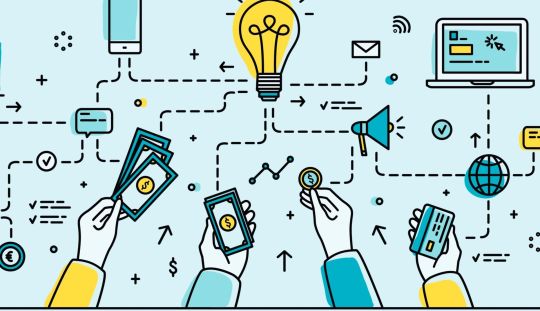
Crowdfunding is a method of raising funds for a project or effort by having many individuals contribute a certain amount for a set period of time. Crowdfunding is essentially a financial instrument, although it has other advantages and may help significantly to your cause. It may seem like any other fundraiser, but believe me when I say it is so much more. A crowd with vested interests and excitement is worth far more than money.
Crowdfunding may significantly aid in project scalability. You may rapidly target prospective consumers and investors with a worldwide reach. Here are some pointers for conducting a successful artist crowdfunding campaign:
Make a distinctive and catchy title for your project. Choose a title that people will be able to relate to.
Plan an interesting and entertaining event. Using numerous social media platforms, express your aims. Describe the social influence of your art.
Mention the time range in which you want to attain your financial objectives.
Keep your supporters and donations up to date on a regular basis. Show them your appreciation and the progress you're making. Maintain contact with them during the project and even after it is completed.
Another advantage of crowdfunding is that after you've successfully reached your target audience with an event, you can always count on the community to donate to your next or impending event. Not only that, but they may assist spread the word about your work and your effort.
References:
A case study in crowdfunding: What works for artists (no date) Artwork Archive, viewed on 13 November 2022,
2 notes
·
View notes
Text

Interior of Vivienne Westwood's "Let it Rock" circa 1971 (now "Worlds End"), at 430 King's Road in London
12 notes
·
View notes
Text
Week 8 - proud, then enraged, british ancestors
Pre-class:
The video is particularly helpful in explaining why models can be superior to sketches because they can allow a designer to physically feel how the object feels in the hand, how we interact with it in terms of it's texture, weight, and form - we cannot get this sense of an object's ergonomics without a physical model. The fidelity of the models refer to the level of detail, how close to the final product that part is in terms of its material makeup, weight, form and surface texture.
Post-class:
This week we were introduced to 3ds Max, which is pretty different from most of the other modelling software I've used in the past. This program is clearly more oriented towards more artistic and creative design work, whereas Fusion360 or Rhino are more heavily oriented toward engineering and architectural design respectively.
I initially found it incredibly unintuitive, and after using it for a good few hours, I found it even more unintuitive and somehow even more confusing than when I'd started. This program is incredibly intricate, and is clearly designed for someone who already knows how to use it, as the modelling tools available are unbelievably specific and tailored towards highly specialized forms that I'm not yet used to.
I first started with just learning the layout, as one does, and of course making the all-mighty green sphere.
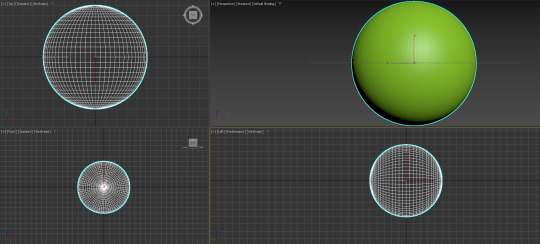
The primitives were thankfully nice and easy to use, and I was very grateful to see the inclusion of the teapot as a base object, I could feel my British ancestors smiling upon me as I made a teapot in such high detail that it completely crashed my 3ds Max. Playing around with the modifiers a bit, I then realized I could bring shame upon my bloodline by melting the teapot to unrecognizability.

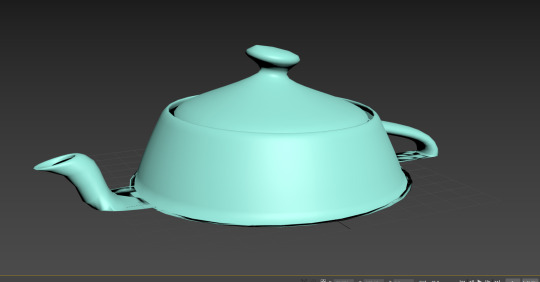
I tried also to create the infamous Blender donut via several methods, none of them particularly working out, but it definitely let me explore some of the strange options this program has.

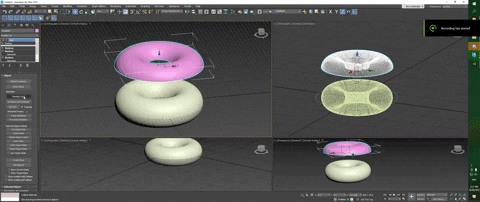
I played around with a few more modifiers, eventually discovering the magic of the 'cloth' modifier. This was a tool I hadn't experienced in any of the previous programs I'd used, so I was immediately interested. I did a bit of research and found it could be used to make these beautiful draperies, for example this one by a reddit user:
Naturally I thought, "why not use this to tuck a frog in for a lovely night's sleep?"

This of course lead me down a rabbit hole of several hours of trying to let the blanket drape nicely and comfortably over our sweet amphibian in his fancy pink and purple bed, to absolutely no good result. I tried plenty of other methods, but I think this highly anticlimactic gif is a perfect summation of my experience with 3ds max so far.
I'm clearly not yet talented enough to model the frog, I found it and imported it from TurboSquid by the user herbertvanderwegen, source:
Overall I feel like I have a lot left to learn of 3ds Max, should I feel it a better alternative to other programs in future. I did genuinely enjoy testing out some of the unique modifiers that I haven't seen in other programs, particularly the melt, cloth and the other 700 "crash program" buttons. I think this week has still been really valuable for me because I know more about what style of CAD/modelling program is best suited to me, and this was a great opportunity to go outside my comfort zone. Plus, it's not every day you get to fail to put a blankie on a frog.
3 notes
·
View notes
Text
Week 8: The motivation for using AR beauty filters
Selfies have become an extremely popular culture on digital media platforms such as Facebook, Instagram, and Snapchat. It is estimated that every third photo people from 18 to 24 years old take is a selfie (Zetlin 2019). As the selfie trend continues to rise, there's an increasing demand for beauty features in various technologies, particularly in smartphones and social media apps. Instagram is one of the digital platforms that is famous for its beauty features which help users create visually appealing and engaging content (Vendemia & DeAndrea 2018). Augmented Reality (AR) filter is one of them. Since it appeared, AR filters have achieved an impressive number of users. It is reported that there are 600 million people use AR filters each month on Instagram or Facebook and 76% of Snapchat users use them every day (Bhatt 2020). In this post, we will discover the motivation for using AR face filters on social media.
It is suggested that the possible motivation for using AR face filters is related to self-presentation, enjoyment, social interaction, and convenience (Erz, Marder & Osadchaya 2018; Rauschnabel 2018; Sheldon et al. 2017; Throuvala et al. 2019).
Self-presentation
There are three distinct motivations prompting individuals to engage with augmented reality (AR) filters for self-presentation (Javornik et al. 2022). Firstly, users may employ these filters to authentically express facets of their true selves, which they might feel constrained from revealing in traditional face-to-face interactions (Javornik et al. 2022). Despite virtual alterations, these filters offer a platform for genuine self-expression, often inhibited offline (Javornik et al. 2022). Secondly, AR filters facilitate the projection of an idealized self-image, allowing users to embody aspirational traits such as beauty or coolness in real-time (Hong et al. 2020). By enhancing their appearance, users fulfill their desire for positive self-presentation, aligning with their idealized self-perception. Thirdly, individuals utilize AR filters to explore and visualize novel facets of their identity, transcending both their true and ideal selves. This transformative process, supported by digital technologies, enables users to experiment with new 'possible selves', expanding their self-concept and seeking novelty in their self-expression (Javornik et al. 2022). Collectively, these motivations influence the frequency of AR filter usage and the extent of exploration, shaping users' online self-presentation in multifaceted ways.
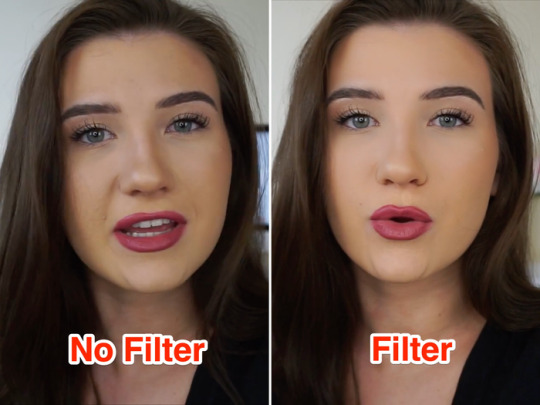
Enjoyment
Drawing parallels with other AR technologies and digital platforms, it suggests that the entertainment value of AR face filters contributes significantly to their appeal, fostering escapism and amusement (Javornik et al. 2022). With many filters incorporating humorous elements like funny virtual props, users find gratification in the enjoyable experience, akin to dressing up for themed parties (Javornik et al. 2022). Consequently, both the frequency of use and exploration of AR face filters are driven by the desire for entertainment and fun
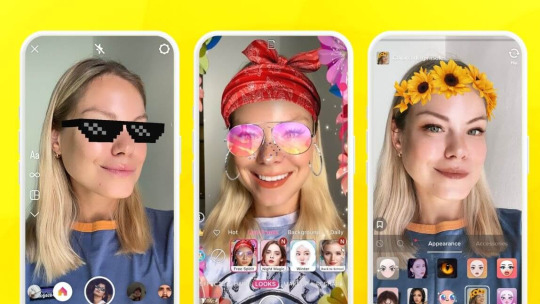
Social Interaction
While selfies are typically posted for social approval, AR filtered content serves broader purposes, such as initiating interactions and drawing attention to specific topics (Hong et al. 2020). AR filters elicit varied reactions from the audience, enhancing engagement and facilitating communication with followers (Javornik et al. 2022). Overall, the need for social interactions emerges as a significant motivator for both the frequency of filter use and exploration.
Convenience
AR filters offer convenience in creating relevant and meaningful content effortlessly (Javornik et al. 2022). Brands leverage AR try-on features for product search and decision-making in industries like makeup and fashion, eliminating the need for physical store visits. Similarly, social media users find convenience in applying AR filters for meaningful interactions without altering their appearance physically. This convenience factor is anticipated to drive both the frequency of use and exploration of AR filters on social media platforms.
In conclusion, the popularity of augmented reality (AR) face filters on social media stems from motivations like self-presentation, enjoyment, social interaction, and convenience. As the selfie trend persists and AR technology advances, these motivations will continue to shape the use of AR face filters, enriching the digital media experience.
Reference list
Erz, A, Marder, B & Osadchaya, E 2018, ‘Hashtags: Motivational drivers, their use, and differences between influencers and followers’, Computers in Human Behavior, vol. 89, pp. 48–60.
Hong, S, Jahng, MR, Lee, N & Wise, KR 2020, ‘Do you filter who you are?: Excessive self-presentation, social cues, and user evaluations of Instagram selfies’, Computers in Human Behavior, vol. 104, p. 106159.
Javornik, A, Marder, B, Barhorst, JB, McLean, G, Rogers, Y, Marshall, P & Warlop, L 2022, ‘“What lies behind the filter?” Uncovering the motivations for using augmented reality (AR) face filters on social media and their effect on well-being’, Computers in Human Behavior, vol. 128, no. 107126, p. 107126.
Rauschnabel, PA 2018, ‘Virtually enhancing the real world with holograms: An exploration of expected gratifications of using augmented reality smart glasses’, Psychology & Marketing, vol. 35, no. 8, pp. 557–572.
Sheldon, P, Rauschnabel, PA, Antony, MG & Car, S 2017, ‘A cross-cultural comparison of Croatian and American social network sites: Exploring cultural differences in motives for Instagram use’, Computers in Human Behavior, vol. 75, pp. 643–651.
Throuvala, MA, Griffiths, MD, Rennoldson, M & Kuss, DJ 2019, ‘Motivational processes and dysfunctional mechanisms of social media use among adolescents: A qualitative focus group study’, Computers in Human Behavior, vol. 93, pp. 164–175.
Vendemia, MA & DeAndrea, DC 2018, ‘The effects of viewing thin, sexualized selfies on Instagram: Investigating the role of image source and awareness of photo editing practices’, Body Image, vol. 27, pp. 118–127.
Zetlin, M 2019, Taking Selfies Destroys Your Confidence and Raises Anxiety, a Study Shows. Why Are You Still Doing It?, Inc.com, Inc.
0 notes
Text
Face Filter Evolution: Examining the field or AR Filters
Face filters have become a common tool for digital self-expression in the age of social media dominance, where selfies are everything and personal branding is crucial. With the use of these augmented reality (AR) filters, users may alter their look in real-time, improving features, adding animations, and adding fun effects to images and videos. Face filters are becoming more and more popular on platforms like Instagram, Snapchat, and other apps. This gives users a wide range of choices to improve their online profile. Let's take a closer look at face filters, their present condition, and the emergence of augmented reality filters.


Face Filters' Pervasiveness
Face filters are now an essential component of using social media, having been widely adopted by sites like Snapchat. Face filters were first released as straightforward overlays to add amusing details to selfies. Since then, they have developed into complex tools with a wide range of modification possibilities. With the help of interactive effects, beauty filters, and augmented reality masks, users can now turn their ordinary selfies into eye-catching digital artwork.
The AR Filter Epidemic
The next wave of face filter technology is represented by AR filters, which use augmented reality to provide engaging and interactive experiences. AR face filters provide an additional level of interaction by dynamically reacting to users' motions and surroundings, in contrast to regular face filters, which are static overlays. These filters may be used to create wacky animations that follow users' facial expressions or virtual reality experiences.
AR filters have gained popularity on social media sites like Facebook and Instagram, where users may utilize Spark AR Studio to make and share their own personalized filters. Due to the democratization of filter production, a wide range of distinctive and creative filters that satisfy various tastes and preferences have proliferated. The rise in popularity of AR filters has also benefited brands and influencers, who use them as marketing tools to interact creatively with audiences.
The Effect on Identity and Self-Image
Face filters are a fun and interesting way to add effects to images and videos, but there are concerns about how they may affect identity and self-perception. Unrealistic beauty standards and body dissatisfaction have been connected to the ubiquity of artificially filtered photographs on social media. Face filters, according to their detractors, reinforce unrealistic beauty standards and put more pressure on people to meet digitally modified notions of perfection.
Furthermore, the growing use of AR filters casts doubt on the veracity of online interactions by obfuscating the distinction between fact and fiction. There's a chance that users may start to portray a controlled image of themselves through filters, which might undermine real interactions and encourage a culture of insecurity and comparison.
Towards the Future: The Evolution of Face Filters
Face filters have countless possibilities in store as technology develops further. The possibilities for innovation are endless, ranging from AI-powered filters that provide incredibly realistic changes to filters that work perfectly with virtual and augmented reality experiences. Face filters should be seen critically, though, as we accept new technological advances and take into account how they may affect social interaction, identity, and self-perception.
In summary, face filters have completely changed how we engage with digital media by providing a medium for artistic expression and self-representation. With the introduction of AR filters, a new era in filter technology is beginning, one in which interaction and immersion become paramount. Maintaining authenticity in our online connections while embracing innovation must be balanced as we traverse this changing terrain.
0 notes